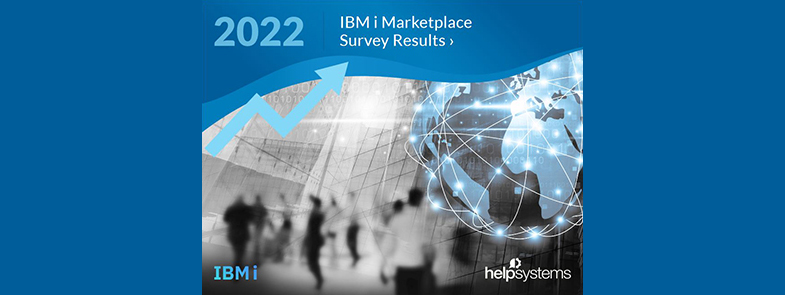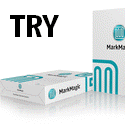In The Spotlight
Current Events All Events
October 21-24, 2024
Mandalay Bay – Las Vegas
Register early to save 20%.
Don’t just adapt to the AI revolution; lead it.
Join us this October for an immersive learning experience designed to fuel your AI journey. We’ll equip you with the practical skills to apply GenAI to your role and unlock the full potential of the IBM technology you rely on. Experience hands-on watsonx Challenges, technology breakouts, and instructor-led labs to elevate your expertise, earn credentials, and exchange insights with peers shaping the future of tech.
Featured AI speakers:
Dinesh Nirmal, IBM Software
Senior Vice President, Products
Joseph Spisak, Meta
Product Director & Head of Generative AI Open Source
Adil Islam, Stability AI
Product lead
Holly Cummins, Red Hat
Senior Principal Software Engineer
Vincent Gonguet, Meta
Director of Product, GenAI Trust
Rowena Parry, NatWest
AI Product Developer
Garrett Rowe, Technology Dynamics
VP of AI
David Tan, CrushBank
CTO
More than a conference; collaborate, learn and play
IBM TechXchange brings technologists and business practitioners who use IBM products together through local events, webinars, and in our online community, designed for deep technical learning, sharing, and networking. These opportunities to collaborate lead up to the global conference where we share what’s to come and what’s to know across multiple areas of focus.
- 21 October 2024 - 24 October 2024
- Mandalay Bay – Las Vegas
Support MC Press Online

Support MC Press with a contribution of any size.
Your support helps MC Press deliver free quality information about the new and legacy technologies you rely on to IT Professionals everywhere. Our goal continues to be helping you become more productive on the job and get more out of your career. Every contribution, regardless of size, furthers that goal.





















































 More than ever, there is a demand for IT to deliver innovation. Your IBM i has been an essential part of your business operations for years. However, your organization may struggle to maintain the current system and implement new projects. The thousands of customers we've worked with and surveyed state that expectations regarding the digital footprint and vision of the company are not aligned with the current IT environment.
More than ever, there is a demand for IT to deliver innovation. Your IBM i has been an essential part of your business operations for years. However, your organization may struggle to maintain the current system and implement new projects. The thousands of customers we've worked with and surveyed state that expectations regarding the digital footprint and vision of the company are not aligned with the current IT environment. TRY the one package that solves all your document design and printing challenges on all your platforms. Produce bar code labels, electronic forms, ad hoc reports, and RFID tags – without programming! MarkMagic is the only document design and print solution that combines report writing, WYSIWYG label and forms design, and conditional printing in one integrated product. Make sure your data survives when catastrophe hits. Request your trial now! Request Now.
TRY the one package that solves all your document design and printing challenges on all your platforms. Produce bar code labels, electronic forms, ad hoc reports, and RFID tags – without programming! MarkMagic is the only document design and print solution that combines report writing, WYSIWYG label and forms design, and conditional printing in one integrated product. Make sure your data survives when catastrophe hits. Request your trial now! Request Now. Forms of ransomware has been around for over 30 years, and with more and more organizations suffering attacks each year, it continues to endure. What has made ransomware such a durable threat and what is the best way to combat it? In order to prevent ransomware, organizations must first understand how it works.
Forms of ransomware has been around for over 30 years, and with more and more organizations suffering attacks each year, it continues to endure. What has made ransomware such a durable threat and what is the best way to combat it? In order to prevent ransomware, organizations must first understand how it works. Disaster protection is vital to every business. Yet, it often consists of patched together procedures that are prone to error. From automatic backups to data encryption to media management, Robot automates the routine (yet often complex) tasks of iSeries backup and recovery, saving you time and money and making the process safer and more reliable. Automate your backups with the Robot Backup and Recovery Solution. Key features include:
Disaster protection is vital to every business. Yet, it often consists of patched together procedures that are prone to error. From automatic backups to data encryption to media management, Robot automates the routine (yet often complex) tasks of iSeries backup and recovery, saving you time and money and making the process safer and more reliable. Automate your backups with the Robot Backup and Recovery Solution. Key features include: Business users want new applications now. Market and regulatory pressures require faster application updates and delivery into production. Your IBM i developers may be approaching retirement, and you see no sure way to fill their positions with experienced developers. In addition, you may be caught between maintaining your existing applications and the uncertainty of moving to something new.
Business users want new applications now. Market and regulatory pressures require faster application updates and delivery into production. Your IBM i developers may be approaching retirement, and you see no sure way to fill their positions with experienced developers. In addition, you may be caught between maintaining your existing applications and the uncertainty of moving to something new. IT managers hoping to find new IBM i talent are discovering that the pool of experienced RPG programmers and operators or administrators with intimate knowledge of the operating system and the applications that run on it is small. This begs the question: How will you manage the platform that supports such a big part of your business? This guide offers strategies and software suggestions to help you plan IT staffing and resources and smooth the transition after your AS/400 talent retires. Read on to learn:
IT managers hoping to find new IBM i talent are discovering that the pool of experienced RPG programmers and operators or administrators with intimate knowledge of the operating system and the applications that run on it is small. This begs the question: How will you manage the platform that supports such a big part of your business? This guide offers strategies and software suggestions to help you plan IT staffing and resources and smooth the transition after your AS/400 talent retires. Read on to learn: